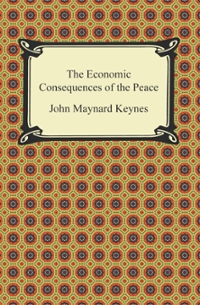Question
Discuss they types of formal organisation of communication and explain the general purpose of each type. 5.Explain the terms operational management as well as major
Discuss they types of formal organisation of communication and explain the general purpose of each type.
5.Explain the terms operational management as well as major managerial activities involved in operational management
6.What is controlling.
7.List and discuss various steps involved in controlling process
8.What is MNC?
10.List and explain the different attitudes of international managers. Japan Management
11.Requirements of effective controlling Role of IT in controlling
12.What is productivity? Explains the methods of improving productivity in IT industry 13.Explain the impact of liberalisation quoting examples from software industrytechniques.
Question 1:
A single-phase, full-bridge diode rectifier fed from a 230 V, 50 Hz sinusoidal source supplies a series combination of finite resistance, R, and a very large inductance, L. The two most dominant frequency components in the source current are?
Question 2:
Consider a signalx[n]=(12)n1[n],x[n]=(12)n1[n],where1[n]=01[n]=0ifn<0,n<0,and1[n]=11[n]=1ifn0.n0.The z-transform ofx[nk],k>0iszk112z1x[nk],k>0iszk112z1with region of convergence being
Question 3:
The value of the following complex integral, withCrepresenting the unit circle centered at origin in the counterclockwise sense, is:Cz2+1z2+2zdz
Question 4:
A lossless transmission line with 0.2 pu reactance per phase uniformly distributedd along the length of the line, connecting a generator bus to a bus, is protected up to 80 % of its length by a distance relay placed at the generator bus. The generator terminal voltage is 1 pu. There is no generation at the load bus. The threshold pu current for operation of the distance relay for a solid three phase-to-ground fault on the transmission line is closest to:
Question 5:
Consider a linear time-invariant system whose inputr(t)r(t)and outputy(t)y(t)are related by the following differential equation:d2y(t)d(t)2+4y(t)=6r(t)d2y(t)d(t)2+4y(t)=6r(t)
The poles of this system are at?
Question 6:
Which of the following is true for all possible non-zero choices of integersm,n;mnm,n;mnor all possible non-zero choices of real numbersp,q;pqp,q;pq, as applicable ?
Question 7:
A sequence detector is designed to detect precisely 3 digital inputs, with overlapping sequences detectable. For the sequence (1,0,1) and input data (1,1,0,1,0,0,1,1,0,1,0,1,1,0), what is the output of this detector ?
Question 8:
A three-phase, 50 Hz, 4-pole induction motor runs at no-load with a slip of 1 % With full load, the slip increaseas to 5 % The % speed regulation of the motor (rounded off to 2 decimal places) is?
Question 9:
A double pulse measurement for an inductively loaded circuit controlled by the IGBT switch is carried out to evaluate the reverse recovery characteristics of the diaode, D, represented approximately as a piecewise linear plot of current vs time at diode turn-off.Lparis a parasitic inductance dur to the wiring of the cirucit, and is in series with the diode. The point on the plot (indicate your choice by entering 1, 2, 3 or 4) at which the IGBT experiences the highest current stress is
Question 10:
A single-phase, 4 kVA, 200 V/100 V, 50 Hz transformer with laminated CRGO steel core has rated no-load loss of 450 W. When the high-voltage winding is excited with 160 V, 40 Hz sinusoidal ac supply, the no-load losses are found to be 320 W. When the high-voltage winding of the same transformer is supplied from a 100 V, 25 Hz sinusoidal ac source, the no-load losses will be____________ W (rounded off to 2 decimal places).R
Step by Step Solution
There are 3 Steps involved in it
Step: 1

Get Instant Access to Expert-Tailored Solutions
See step-by-step solutions with expert insights and AI powered tools for academic success
Step: 2

Step: 3

Ace Your Homework with AI
Get the answers you need in no time with our AI-driven, step-by-step assistance
Get Started


